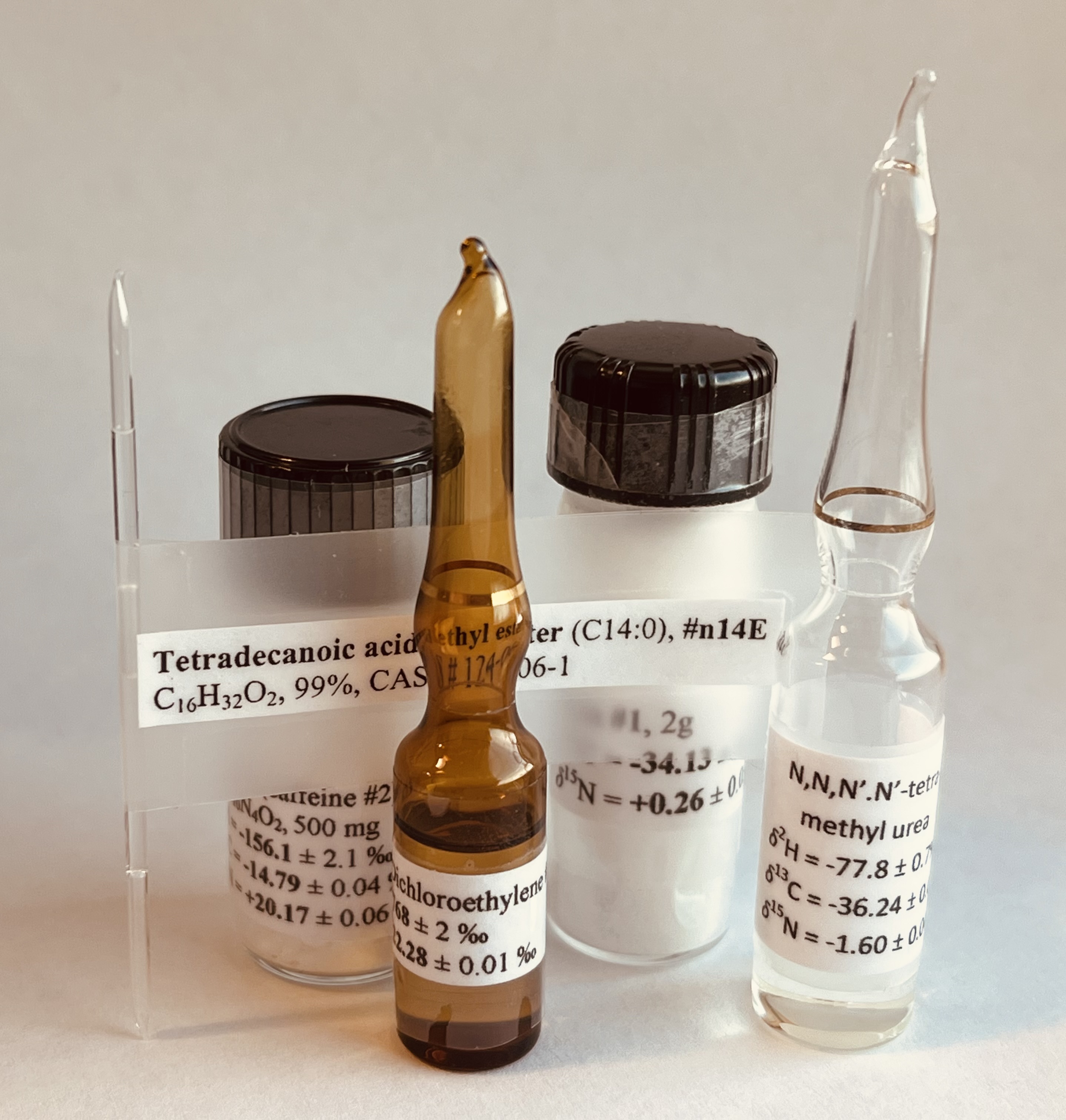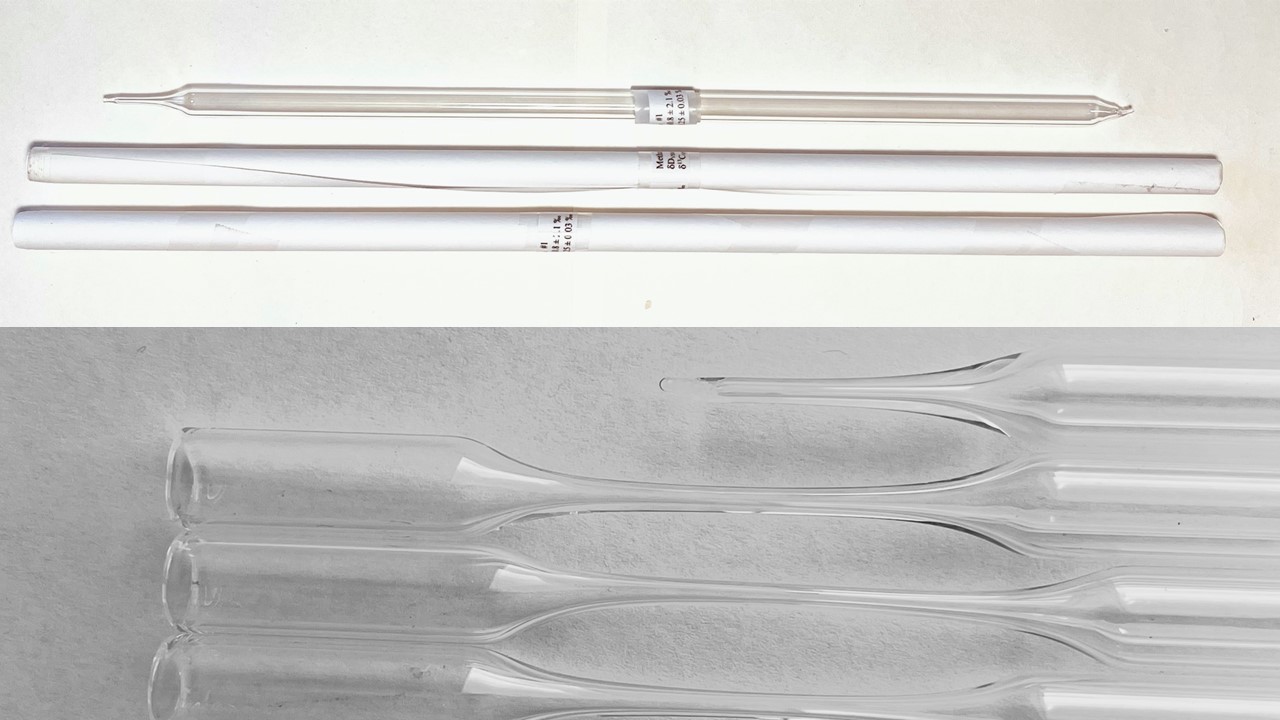
Hydrocarbon gases
Hydrocarbon gases like methane are sealed at atmospheric pressure in 9-mm o.d. glass tubes with a break-seal. The internal volume of ca. 10 milliliter facilitates shipping as non-hazardous reference material. The upper image shows sealed glass tubes, whereas the lower image magnifies one sealed long "break seal" neck and three unsealed top parts of ampoules.
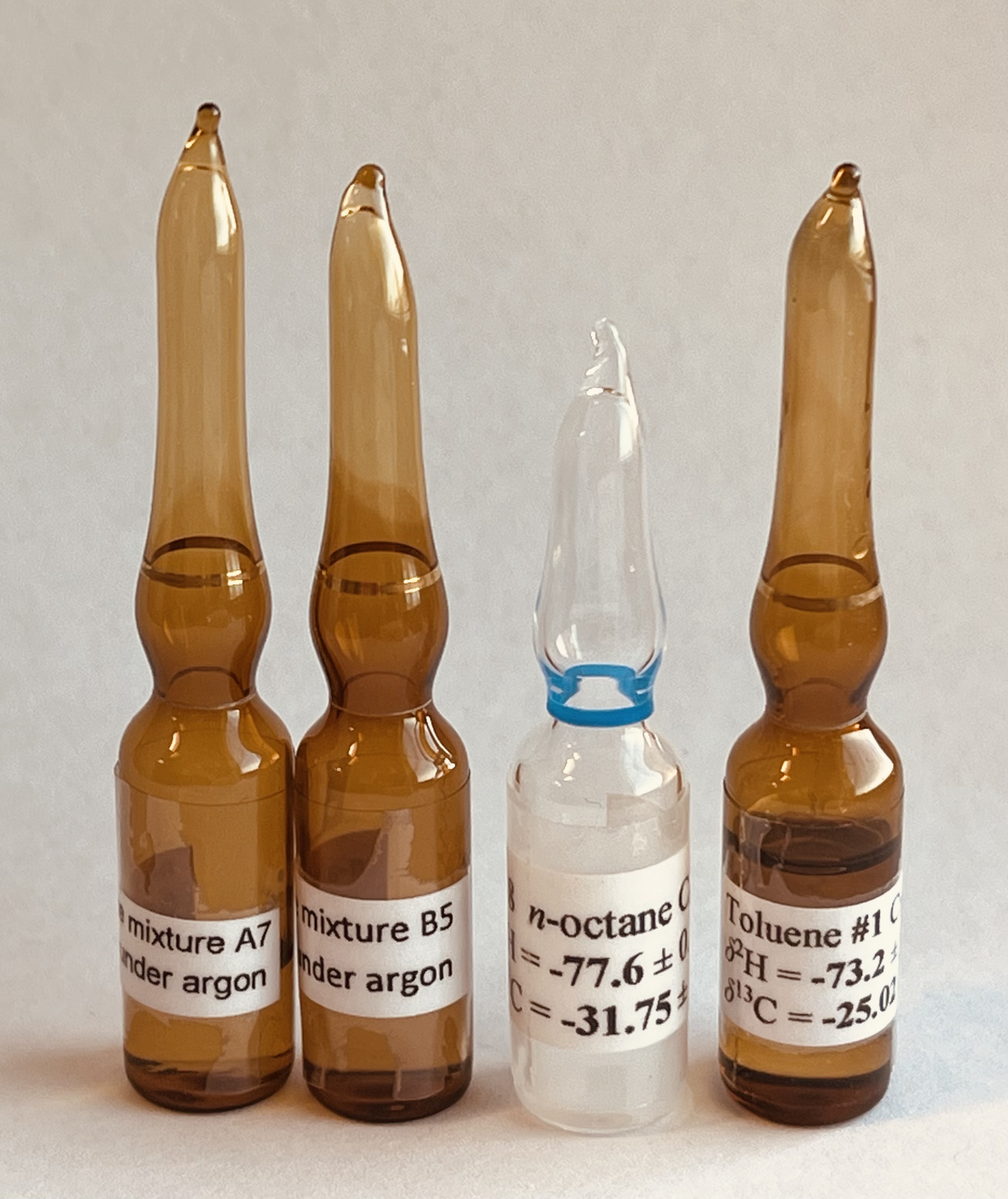
n-Alkane mixtures (types A, B and C), fatty acid ester mixtures, liquid pure n-alkanes, BTX, and other liquids
Many liquid reference materials are sealed under argon in glass ampoules.
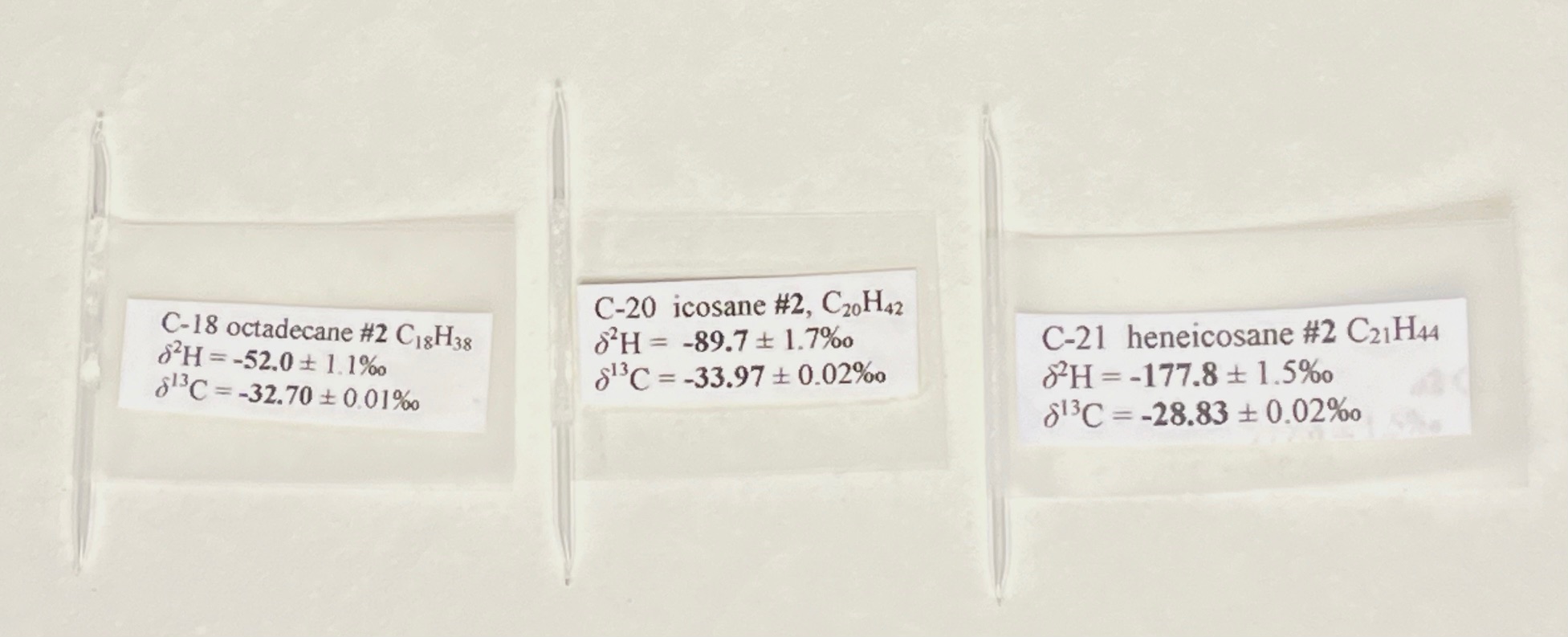
Solid n-alkanes
Most solid n-alkanes are sealed in amounts of no less than 5 milligram in glass capillaries.
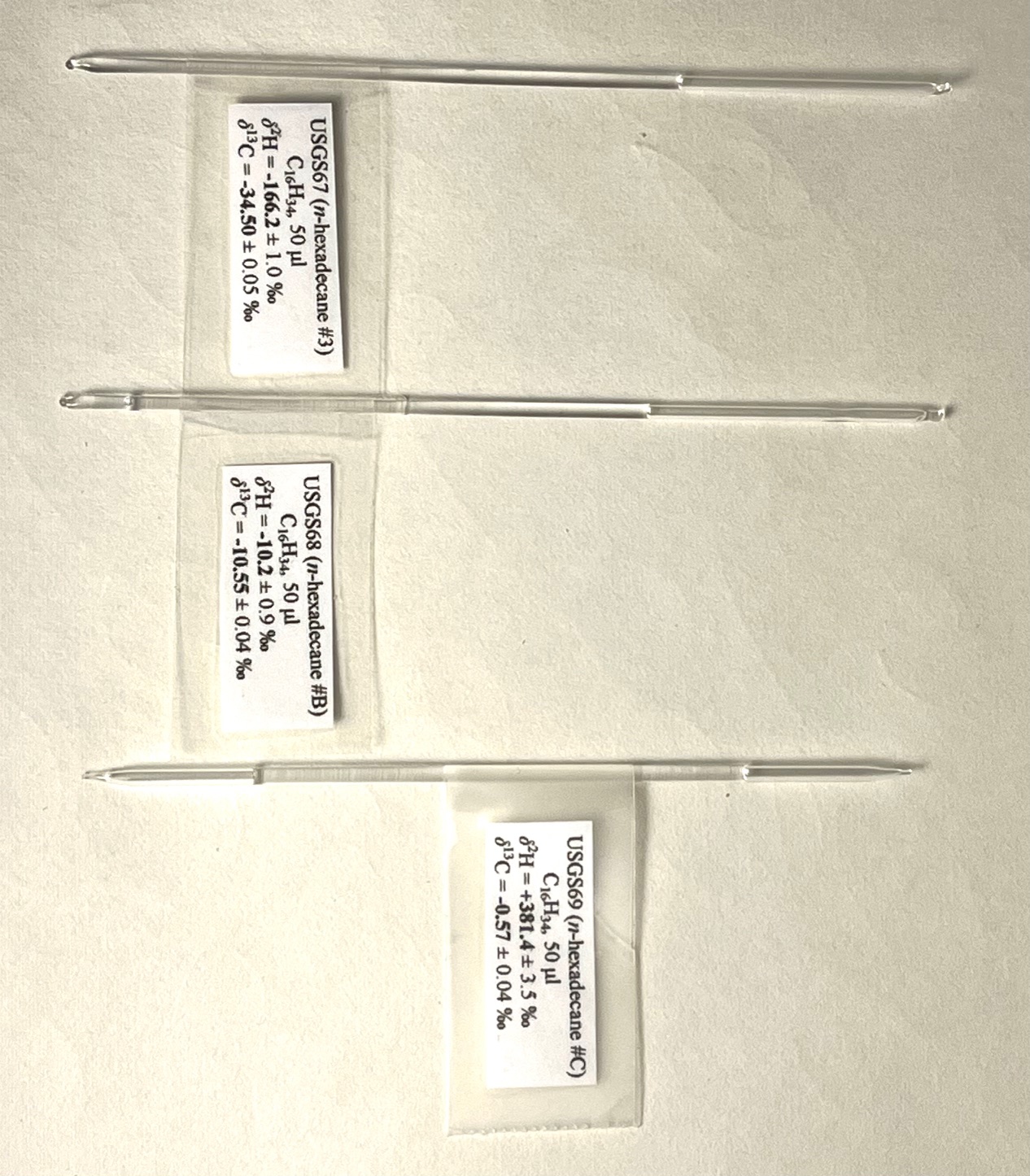
USGS hexadecanes
The USGS67, USGS68, and USGS69 hexadecanes are sealed in amounts of 50 microliter in long glass capillaries. For details, see: Schimmelmann et al., 2016, Analytical Chemistry 88 (8), 4294-4302. https://doi.org/10.1021/acs.analchem.5b04392
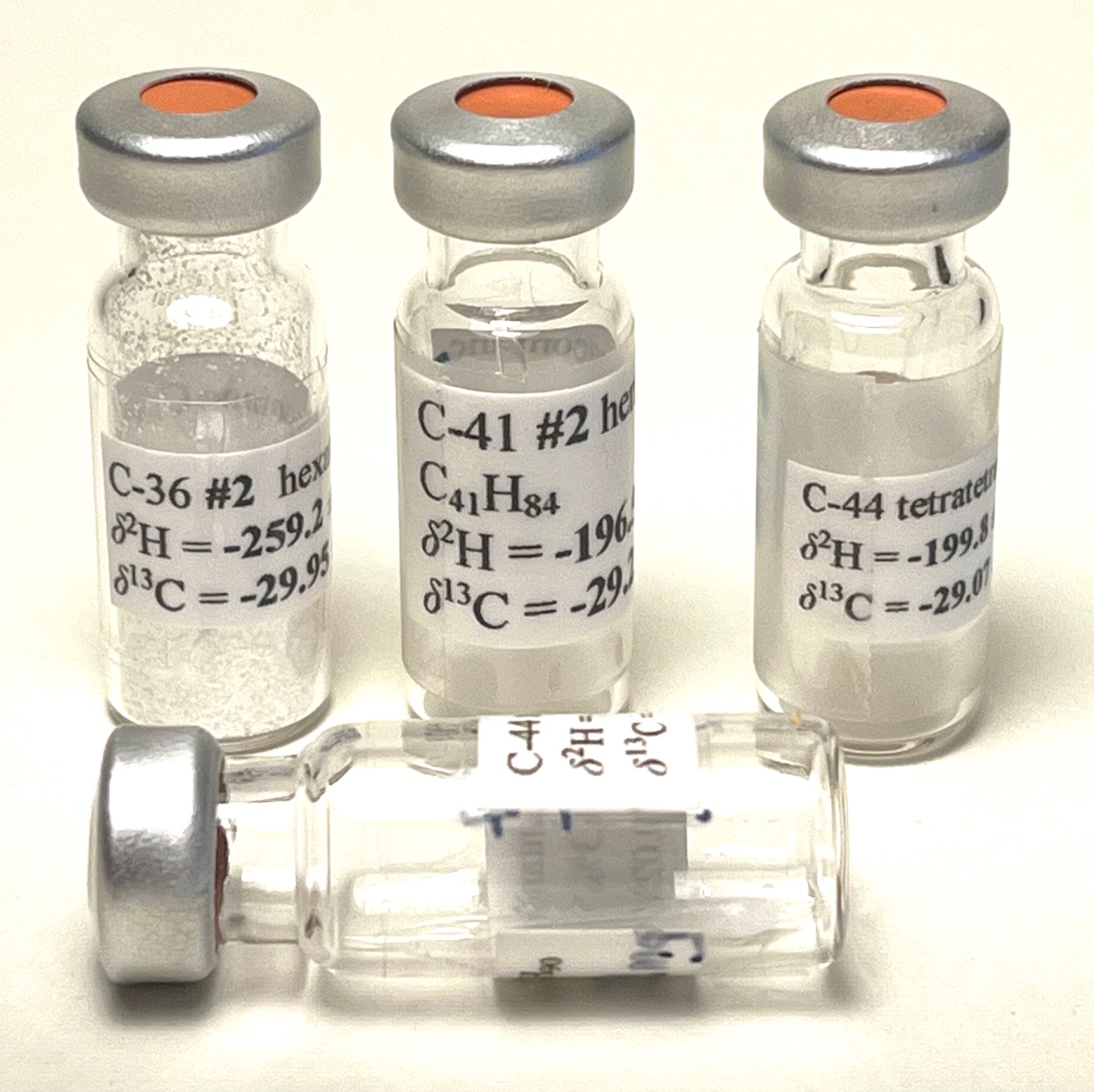
Longer-chain n-alkanes
Longer-chain n-alkanes are either filled as wax particles into glass vials, or are shipped as wax droplets at the end of short glass rods inside glass vials.
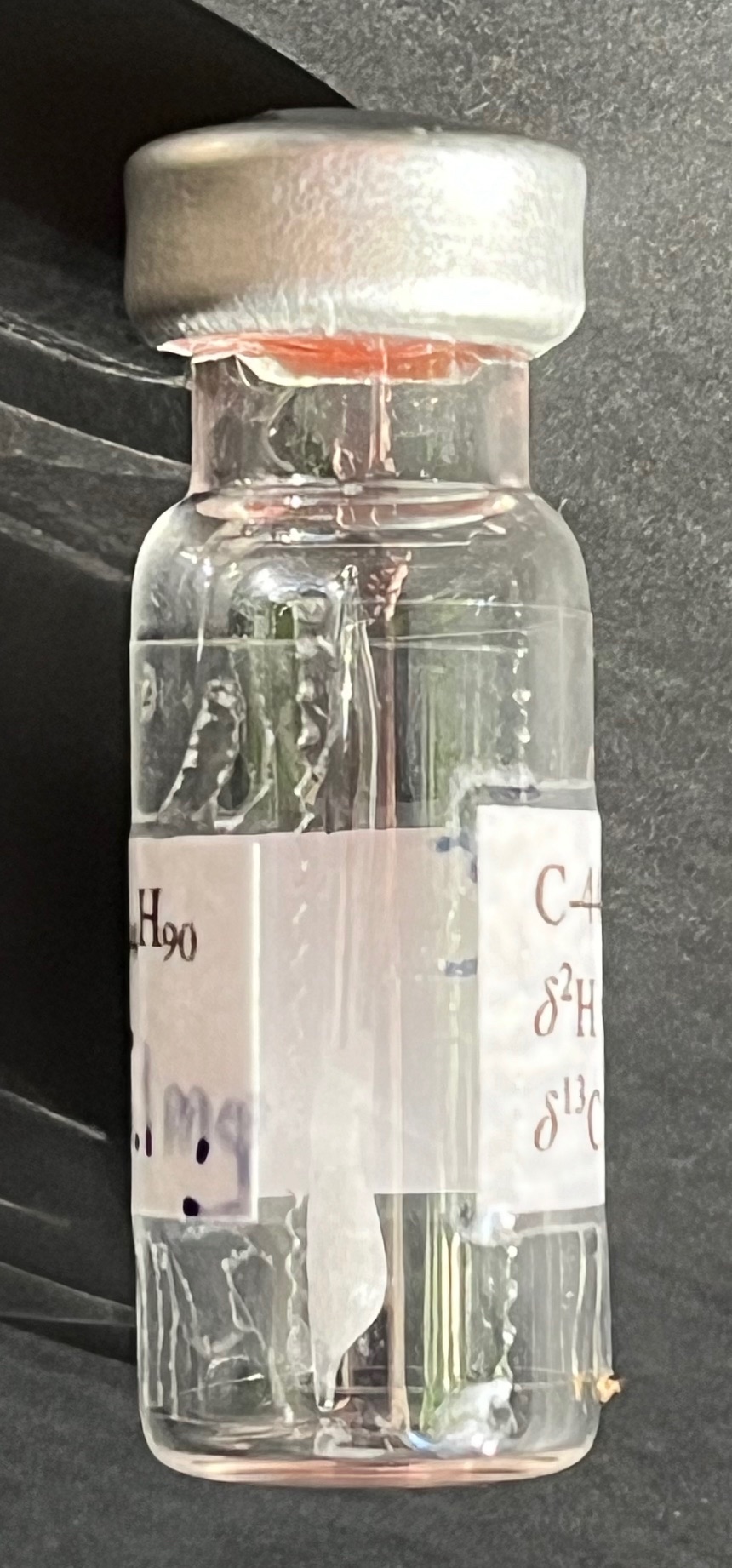
n-Alkane wax droplet
An n-alkane wax droplet with a weight of more than 5 milligram adheres to the end of a glass rod inside a crimp-sealed glass vial.
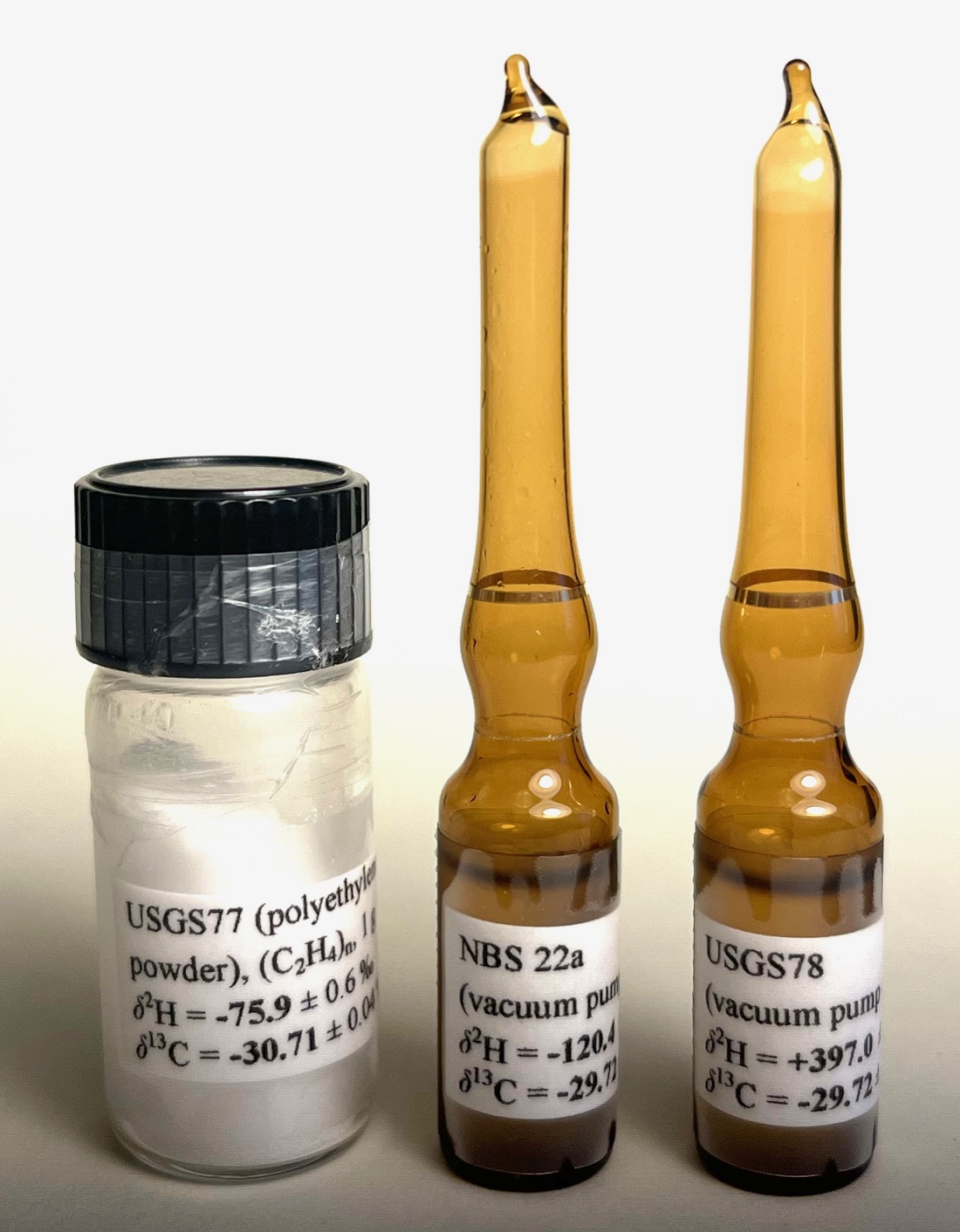
USGS polyethylene and oils
USGS77 (polyethylene powder) is available in glass vials. Oils USGS78 and NBS 22a are sealed under argon in glass ampoules. For details, see: Schimmelmann et al., 2016, Analytical Chemistry 88 (8), 4294-4302. https://doi.org/10.1021/acs.analchem.5b04392
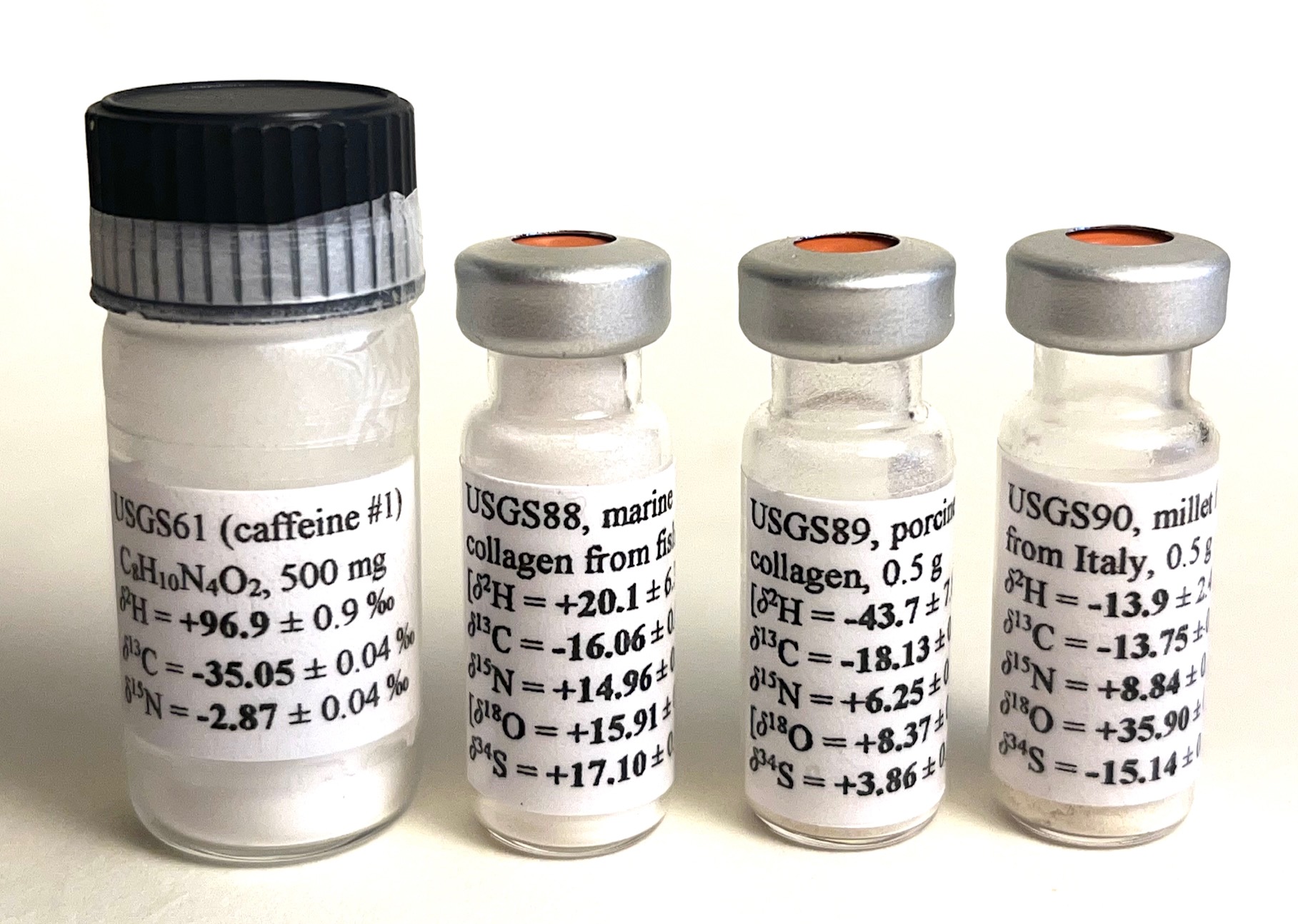
USGS caffeines, amino acids, collagens, flours, etc.
Many solid organic USGS reference materials are available in crimp-sealed glass vials. For example, see: Schimmelmann et al., 2016, Analytical Chemistry 88 (8), 4294-4302. https://doi.org/10.1021/acs.analchem.5b04392
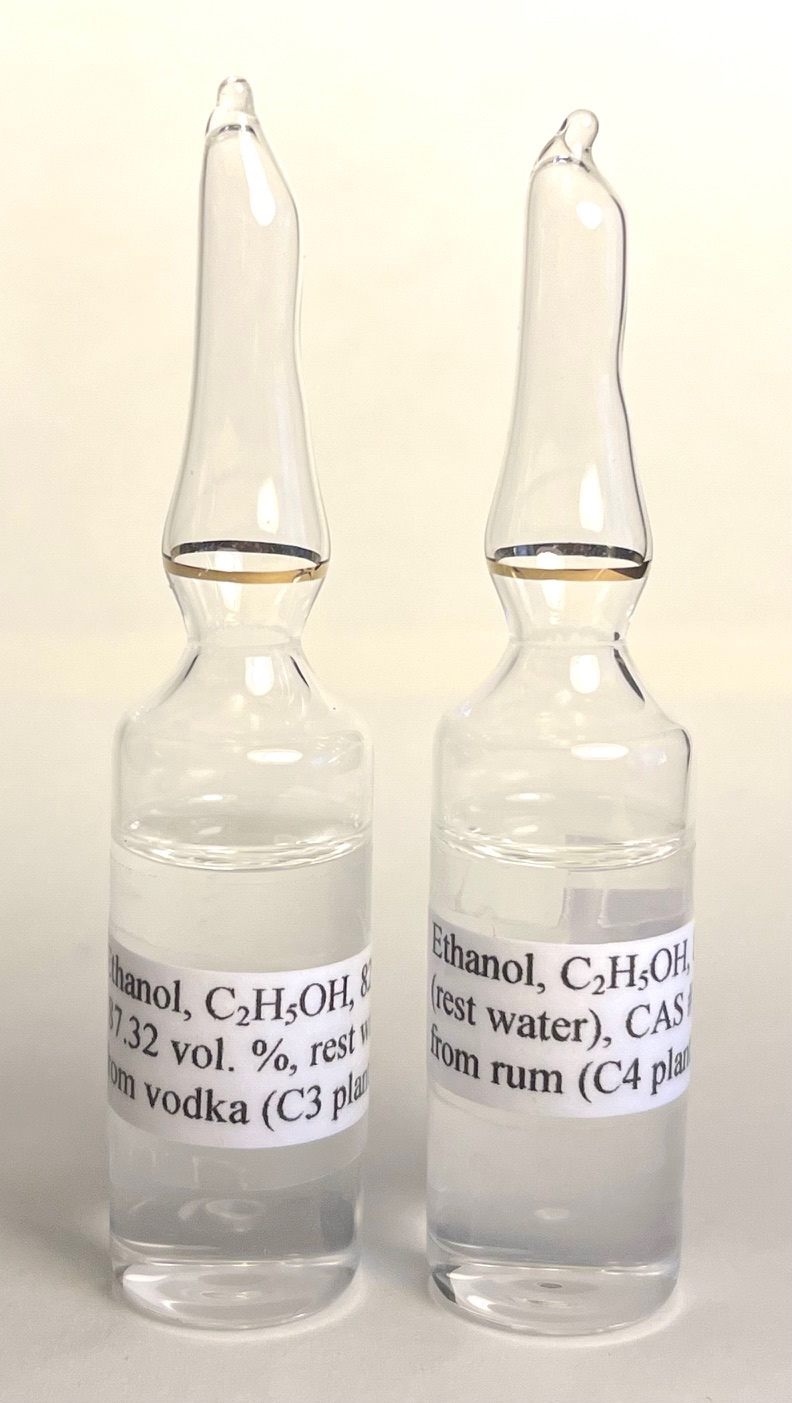
Ethanols
6 different types of ethanols from C3 (e.g., potato) and C4 (e.g., sugar cane) origins are available as 5-milliliter aliquots sealed under argon in glass ampoules, encompassing different ethanol concentrations in water, all the way to pure 200-proof ethanols.

